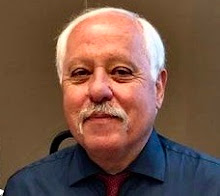A recent story in the local newspaper on “Further,” author Ken Kesey’s 1939 International Harvest bus immortalized in The Electric Kool-Aid Acid Test by Tom Wolfe, highlighted efforts by Kesey's son to renovate the old vehicle. The article brought back memories. But not of Kesey, an veritable icon in the Eugene-Springfield area.
Actually, visions of Hunter S. Thompson’s last visit to Eugene in the early 90s enveloped my brain. The colorfully-painted bus, parked out front at the Hult Center for the Performing Arts in downtown Eugene, awaited for an eventual getaway with Kesey after the show. But more on that tale in the next post on GonzoPR.
Kesey and Thompson were longtime cronies from the advent of the writing style of literary nonfiction known as the “new journalism.” Kesey, a University of Oregon graduate, had become established as a successful novelist in the 60s with publication of One Flew Over the Cuckoo’s Nest and Sometimes A Great Notion.
Thompson was among a burgeoning collection of newspaper and magazine writers known as proponents of the new style of reporting. He had published Hell’s Angels: A Strange And Terrible Saga. As an aside, I never liked the trending form of reporting described as the “new journalism.” Yawn. How uninspired.
Even Tom Wolfe, a pioneer in the form, disliked the term. “Any movement, group, party, program, philosophy or theory that goes under a name with ‘new’ in it is just begging for trouble,” he noted in an compilation of examples from the genre in “The New Journalism,” an anthology of the emerging genre published in 1973.
He continued: “I doubt if many of the aces I will be extolling in this story went into journalism with the faintest notion of creating a ‘new’ journalism, a ‘higher’ journalism, or even a mildly improved variety. Nevertheless, that is what happened.” It certainly had its roots in journalism: feature writing, actually.
A “feature," along with “human interest” pieces, was the newspaper term for a story that fell outside the category of hard news. Yes, it was journalism, including the basic tenets of interviewing and reporting. But early examples of journalists pioneering this unique direction wrote stories that read like a novel.
Only through the most searching forms of reporting was it possible -- in nonfiction -- to use whole scenes, extended dialogue, point-of-view and interior monologue. It was probably that approach, more than any specific devices or techniques, that led to the sudden popularity of a new literary style in journalism, said Wolfe.
In the mid-60s, an increasing awareness of an artistic excitement in journalism was new by itself. Most of its practitioners toiled for newspapers or magazines in the small sphere of “feature journalism.” Really stylish reporting was heretofore unique. No one thought of reporting as having an aesthetic dimension.
But there it was, working journalists plying their craft at places like the New York Herald Tribune (Jimmy Breslin), New York Times (Gay Talese), Washington Post (Tom Wolfe), and The Nation (Hunter S. Thompson), a cosmic awakening of sorts -- the very genesis of the concept of literary nonfiction.
Others writers joined the fray, helping establish the first new direction in journalism in half a century: Truman Capote, Terry Southern, Joe Eszterhas, Joan Didion, Joe McGinnis, and Robert Christgau, among other feature writers. Really stylish reporting was something no one exactly knew how to deal with.
That notion -- more than any specific devices, such as using scenes and dialogue in a novelistic fashion -- morphed into the grand idea about a new journalism, according to Wolfe. If a new literary style could originate in journalism, it stood to reason that journalism could aspire to provide something more, continued Wolfe.
These journalists, primarily magazine writers, found that realistic dialogue engages the reader more completely than any other singular approach. The third device, providing insights into more the minds of than one person, gives the reader the sense of being inside of the character’s mind.
With this approach, journalists used the techniques of injecting realism by moving from scene to scene, resorting to little historical narrative, while recording the dialogue, providing immediacy, reality and emotional involvement. The approach? Interview the subject about their thoughts and emotions, along with everything else.
The fourth and least understood device involved is the recording of everyday gestures, habits, manners, customs, plus various modes of behavior: toward children, servants, superiors, inferiors, peers, plus the various looks, glances, poses, styles of walking and other symbolic details that might exist within a scene, says Wolfe (bottom).
Critics predicted the demise of the new genre, yet it lives on in magazines, newspapers and blog sites on the internet. Indeed, the banner headline on the University of Oregon School of Journalism and Communication’s website notes that “Great Storytelling Starts Here: Change the World by Telling Its Stories.”
Whatever the title of the genre -- literary nonfiction or creative nonfiction -- the form survives and is, in fact, thriving. “Creative” simply refers to the use of literary craft in nonfiction. As Robert McKee noted, “Storytelling is the most powerful way to put ideas into the world today.”


